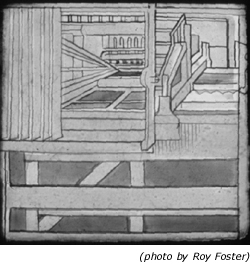Thomas Fowler
Thomas Fowler (1777 – 1843) was a man of many talents: a printer, banker and a self-taught mathematician. He was also an inventor, having developed and patented a system for central heating very similar to what is used today. Despite his patents, his ideas were stolen, making Fowler very wary and protective with his other inventions.
In the 1830’s, Fowler was Treasurer of the Poor Law Union. This job required a considerable number of repetitive monetary calculations, made more complex by the pre-decimal British currency. In response, he developed a system using binary and ternary representations of the monetary values to simplify the calculations. His book Tables for Facilitating Arithmetical Calculations, published in 1838, outlined his techniques.
 Impressed with the ability of lower bases to simplify the calculations
of the Poor Law Union, Fowler began work on a machine to mechanize those
calculations. He developed his calculating machine under a cloak of secrecy,
designing and building the machine entirely on his own in his workshop.
Eventually, a working model of the machine was shown to a number of notable
scientists and mathematicians of the day, including Charles Babbage,
Augustus DeMorgan and the then Astronomer Royal, Professor George Airy.
Impressed with the ability of lower bases to simplify the calculations
of the Poor Law Union, Fowler began work on a machine to mechanize those
calculations. He developed his calculating machine under a cloak of secrecy,
designing and building the machine entirely on his own in his workshop.
Eventually, a working model of the machine was shown to a number of notable
scientists and mathematicians of the day, including Charles Babbage,
Augustus DeMorgan and the then Astronomer Royal, Professor George Airy.
Unfortunately, neither the model nor any drawings have survived. All
that remains are some brief written descriptions by Fowler and DeMorgan,
and perhaps the first and only depiction of a calculating machine in
a stained glass window, in St. Michael’s Church in Torrington,
Devon.
